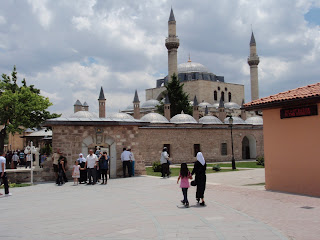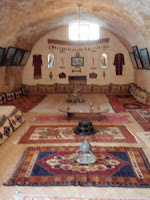Hi All:
Well, it looks like the 2013 season is put to bed and we are home in Canada. We didn’t get a lot of miles under our keel, but it was still a good time. Two Moons has remained on the hard since October 2012.
We returned to Turkey in the spring and enjoyed some extended road trips. Then it was back to Canada for
Mid September we returned to Alanya , Turkey Egypt Syria Israel
However, filling the days in Alanya was not a problem, because the boat To-Do list grows exponentially. But all work and no play makes Grace a grumpy girl (or something like that), so we had to take some diversionary time.
For two years we have tried to reach Cyprus North Cyprus . Their captain and crew had personal physical limitations, which hindered their sailing and we were only too willing and able.
North Cyprus is but 90 miles from Alanya, Turkey, but you are required to visit another harbour about 125 nautical miles east of Alanya in order to formally check out of Turkey Turkey to the Republic of North Cyprus - TRNC (Turkish territories), but are compelled to undergo the formalities of checking out of Turkey and into North Cyprus . It is a financial and administrative source of aggravation on both ends, only to be repeated upon return.
While sitting in Tasucu (the check out harbour) a pair of backpackers hailed the boat, indicating they had spied the Canada Canada Netherlands Northern Cyprus .
North Cyprus - After a long day’s motor we finally arrived in Girne, North Cyprus . First impressions were of a long inhospitable coast, backed by a majestic mountain ridge. The Greek population was evacuated in 1974 by the Turks, in response to a Greek coup. Today, the north and south remain separated by a wide green corridor, essentially splitting the island and the cultures. The corridor continues to be partolled by UN peacekeepers.
 |
| Atop the mountains separating N from S - looking at N Cyprus |
 |
| Little doubt who has claimed this neighbourhood |
Although Turkish teriritory, we encountered a very liberalized, Anglicized community, complete with right-hand-side motor ways; British electrical plugs; bacon, chops and sausages, fish and chips and very cost effective alcoholic beverages. We don’t recall hearing one call to prayer; lost track of the number of casinos in Girne and were astounded when cars would actually stop for us to cross at zebra crossings.
 |
| Our home base - Girne, N Cyprus |
We rented a car for three days and covered the TRNC from east to west. With Mike doing all the driving, only one bush suffered from thee steering wheel being on the” wrong side”. Castles atop the mountain range were reached along very narrow single lane switch-back “roads” which supported no guard rails. In the west end of the republic is a reserve which is home to 1000 feral donkeys. All told the scenery was lovely and worth all the effort.
 |
| A "wild" donkey |
 |
| Add caption |
North and south
We opted not to tour southern Cyprus
We had motored through dead calm for the last four days to arrive at Cyprus , but all the while at dock in Cyprus
It was realy hard to put on shoes and long pants for the flight home. The fall Turkish weather had been fabulous. The days were sunny. There was moderate temperatures and humidity, which was perfect for the ongoing boat jobs. We are now in good shape for next years plans, if we can just find a destination where sensibilities preside.
That's it for season nine. If we fail to make contact over the winter months, we wish you a safe and healthy winter holiday season. Keep the dry side up...........Mike and Grace
That's it for season nine. If we fail to make contact over the winter months, we wish you a safe and healthy winter holiday season. Keep the dry side up...........Mike and Grace
 |
| Girne Venetian castle |
 |
| Old Nicosia |
 |
| olive festival - Girne |


























































